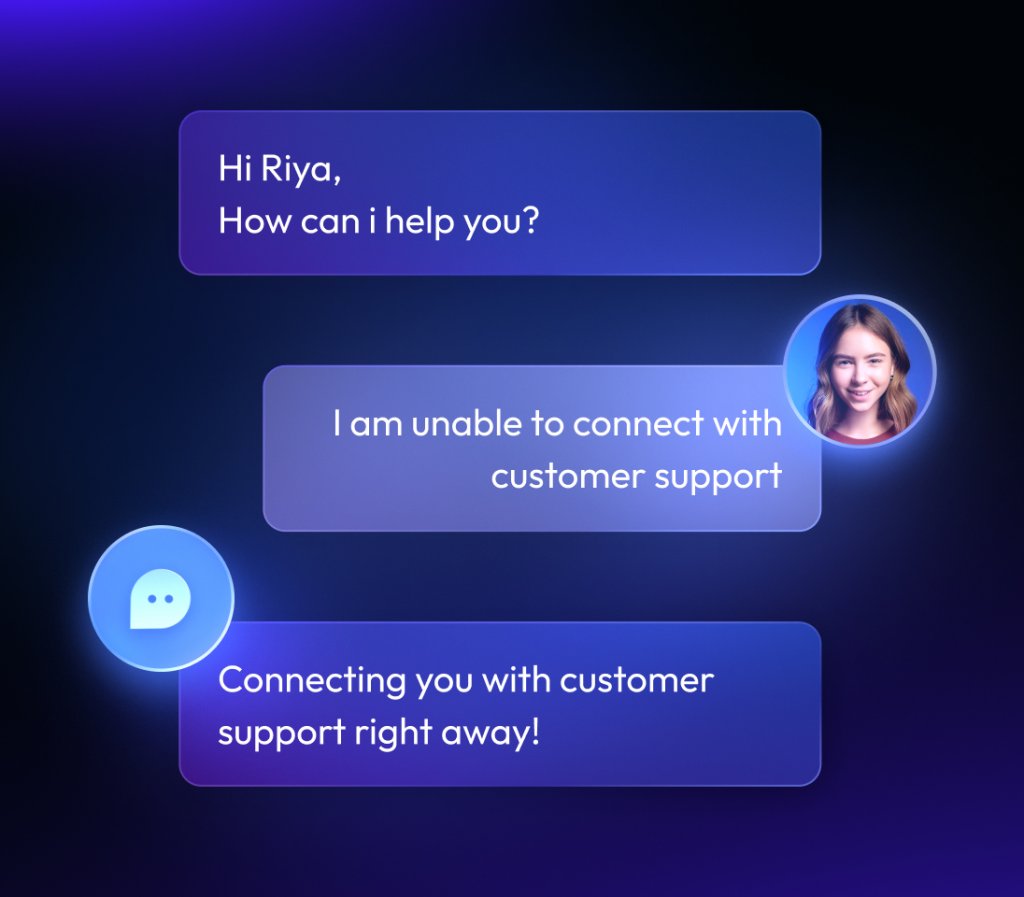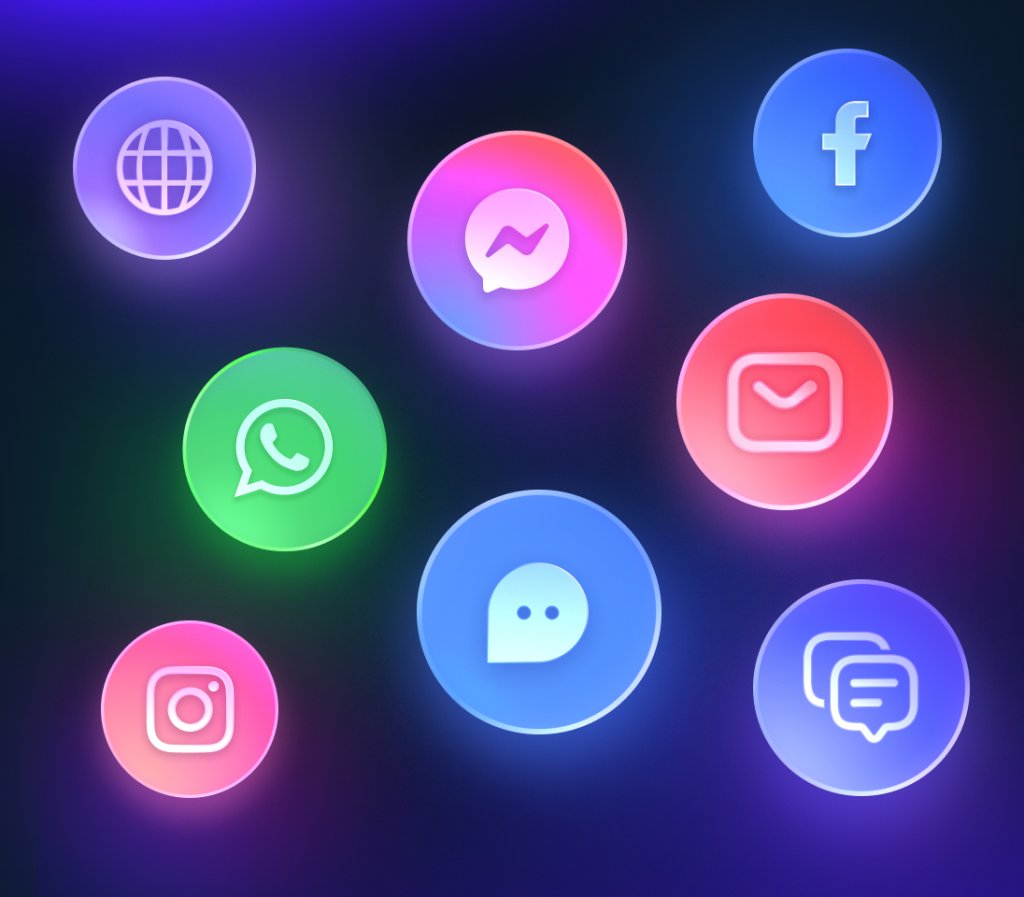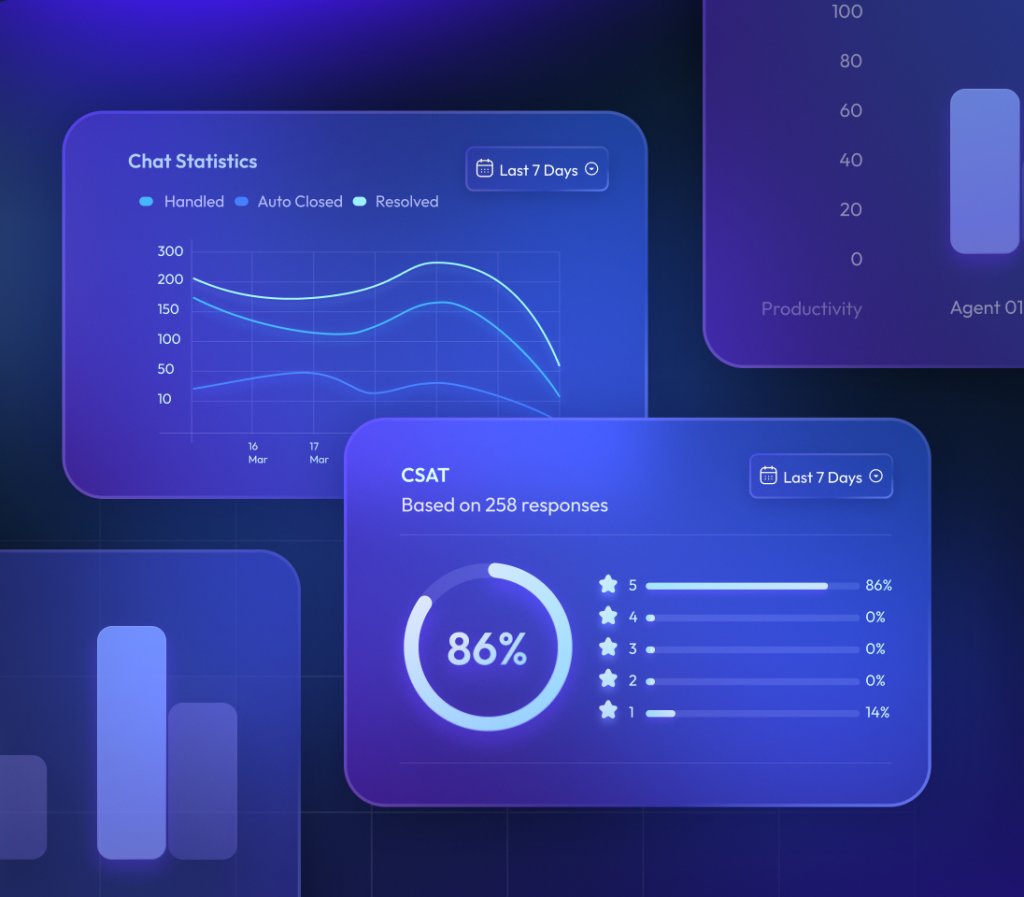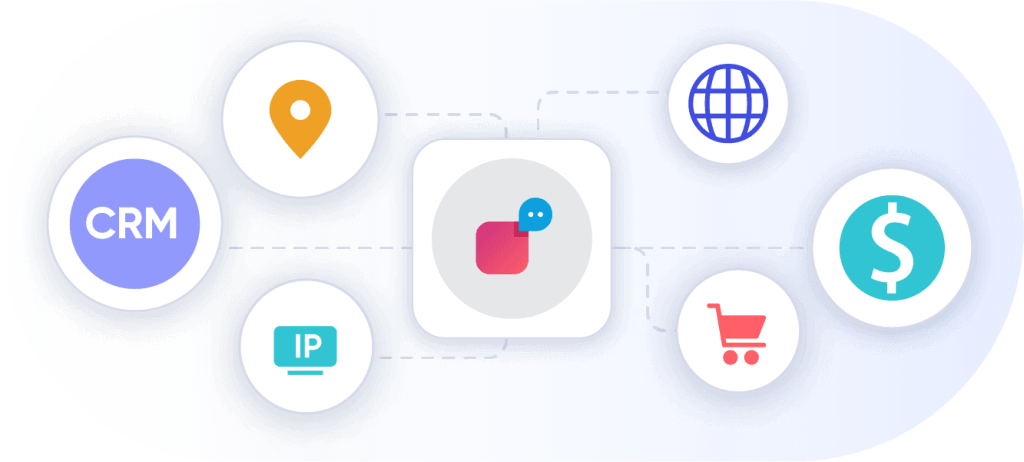Build Delightful Customer Experience
With Verloop.io automate end-to-end customer support, measure your support teams’ performance, and meet your support goals.

Optimise Experiences with Automated Chat and Voice Support
Engage website visitors effortlessly with Verloop.io by automating conversations. Convert visitors into leads in minutes without heavy reliance on agents. Allows customers to connect with businesses on their preferred channels, in their language, and at their convenience.

Live Chat and Voice Support
Create a seamless customer journey by starting to welcome your customers and striking a conversation in seconds.
Drag and Drop Bot Builder
Customise your bot flow to have conversations the way you want. Facilitate self-serve, agent transfer and do more.
NLP/ML FAQ
The bot learns from previous data to create smart ML models and answers all your customers’ concerns spot-on.
Multilingual
Speak the language that strongly resonates with your customers. Support in 80+ languages and 20+ dialects.
LLM
Create truly conversational smart interactions that understand customer intents, sentiments and queries by writing simple prompts.
Campaigns
Keep your customers in the know by running campaigns on new offers, upsell/cross-sell plans, sending payment reminders, etc.

Derive Engagement on Customers' Preferred Channels
Let your customers access support instantly no matter where they are. Verloop.io’s omnichannel automation helps you stay in touch with your customers on all the platforms — WhatsApp, Facebook, In-app, Mobile, Website, etc.
Connect with your customers on platforms where they spend the most time. Send real-time updates to notify on bills, payments, maintenance, literally anything!
Connect with your customers on the most used social media platform. Share updates, solve issues and engage customers with media-rich messages in real-time!
Website
Websites are the first and the best gateways to start having alluring conversations with your customers. Don’t miss being available for them there.
In-app
Allow customers to ask questions, send messages, share images and videos from within your product itself. Provide a single platform experience.
Build accurate, personalised conversations on Instagram for data-driven and common queries. Accelerate buying decisions by helping customers make the right choices.
Empower Agents to Efficiently Resolve Queries
Agent assist is packed with features that your agents need to supercharge their productivity while they are busy handling customer conversations. Verloop.io streamlines live chat with generative AI-powered tools, tracks activities and performance; and reports SLA breaches.

Overall Dashboards
Never be in discord with your metrics. From breaking down your chat statistics to CSAT, you can measure and reflect on your overall KPIs at a glance.
Real-time Dashboards
Nothing like real-time monitoring right? Use these metrics to plan your customer demand, team capacity, and, hence the availability of your agents in an orderly fashion.
User Insights
Gain deeper insights into the phrases and the frequency at which they use them. You can use this later to decode the intent behind these phrases.
Goal Completion Rate
Envision your goals and achieve them by calculating the percentage of users who finish a particular task or goal set by you successfully.
Report Scheduling
Get reports on your agents’ performance, bot’s efficiency, and other imperative support metrics delivered to your inbox at your preferred time.
Generative AI
Improve response time and reduce manual work with tools like AI Rephrase, Expand, Tone Adjustment, AI Summary for detailed notes.

Measure and Reflect for Best Results, Always
Unified dashboard that lets you measure your bot efficiency, compare your bot performance with that of your agents’, learn agent availability and productivity, and do more. All actionable data in a unified view.
Agent Dashboard
Enable agents to monitor their day-to-day metrics meticulously. Verloop.io presents a visual summary of their performance in real-time.
Canned Responses
Quick replies are the need of the hour for your customers. Allow your agents to create, save and use these responses on the go.
Nudge
Allow agents to follow up with customers who left the conversation hanging through gentle reminders.
Live Chat Plugins
Use one single app to access hundreds of other apps and quickly respond or resolve the conversations.
More Details
Allow agents to update their availability status, and pull every information they need by applying appropriate filters.
Everything You Need, Synced with Verloop.io
We integrate seamlessly with various products like CRM, ticketing, payments, and marketing tools. Instantly connect with any app using Verloop.io’s out-of-the-box integrations to enhance your tech stack.

CRM and Ticketing
Access your CRM while paying undivided attention to your customer queries. Verloop.io integrates with about 10+ CRM platforms to offer that seamless customer experience for you too!
Marketing
Seamlessly connect your marketing tools to automate actions and expand the functionality of your services. Sync data in real-time and eliminate the need for back and forth between systems.
Messaging Channels
Be where your customers are. Connect with your customers on their preferred channels and provide an omnichannel experience from Verloop.io’s unified console.
Payments
Enable your customers to make their payments swiftly via a secure payment gateway. Integrate with some of the most trusted payment apps like CCAvenue, Razorpay and Rendit.
More Apps
Verloop.io also integrates with a multitude of other apps ranging from Google sheets to Zapier to Shopify, etc to complement your Martech stack.

Rest Assured with Verloop.io’s Military-grade Security
Verloop.io’s got everything it takes to protect your data from breaches. Implement access controls, provide secure ways to login, and stay compliant to data regulations smartly.
Overall Dashboards
Never be in discord with your metrics. From breaking down your chat statistics to CSAT, you can measure and reflect on your overall KPIs at a glance.
Real-time Dashboards
Use real-time metrics to meet your customer demand, team capacity, and, hence the availability of your agents in an orderly fashion.
User Insights
Gain deeper insights into the phrases and the frequency at which they use them. You can use this later to decode the intent behind these phrases.
Goal Completion Rate
Envision your goals and achieve them by calculating the percentage of users who finish a particular task or goal set by you successfully.
Report Scheduling
Get reports on your agents’ performance, bot’s efficiency, and other imperative support metrics delivered to your inbox at your preferred time.
What is cooking in Verloop.io?
Gain insights on how we are helping brands improve their efficiency and productivity.
Frequently asked questions
Verloop.io helps businesses automate and scale customer support using AI-powered Voice and Chat Agents. You can manage conversations, create workflows, integrate with your tech stack, and track performance—all from one place.
Yes. Verloop.io offers no-code and low-code tools to build and customise workflows that match your business logic. You can also plug in LLMs to enhance the bot’s intelligence and personalise responses.
Absolutely. The platform supports both chat and voice automation. You can deploy AI Voice Agents for inbound and outbound calls across sales, support, and service use cases.
Verloop.io offers native integrations with CRMs, ticketing tools, analytics platforms, and custom backend systems—ensuring your agents and AI work with real-time data.
